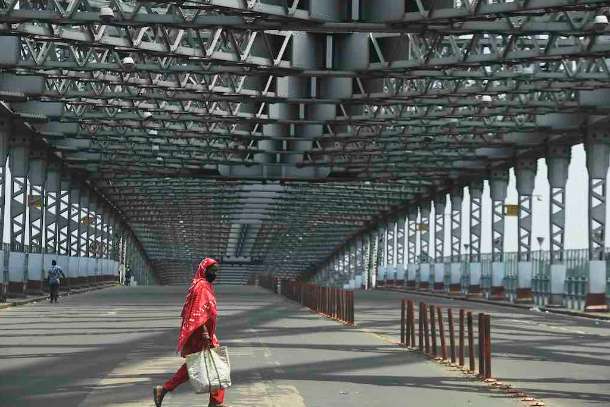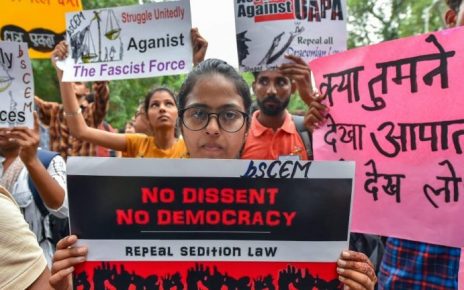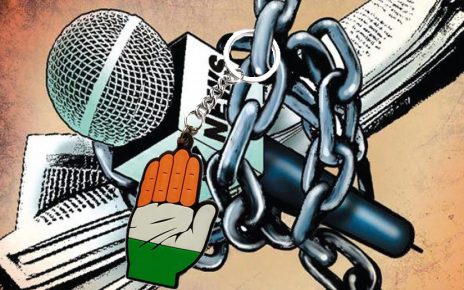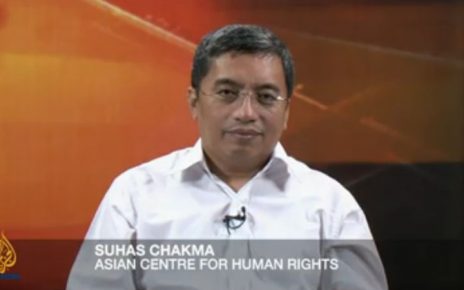UCA News
02 September 2020
By Nirendra Dev
Media silenced as India is accused of underreporting its Covid-19 deaths
The cat is finally out of the bag: The Indian economy is indeed in the doldrums. None other than Finance Minister Nirmala Sitharaman admitted last week that the Covid19 pandemic was “an act of God,” meaning its impacts are beyond human efforts to control.
Ajay Bhushan Pandey, a senior Finance Ministry official, told media that there would be a whopping tax deficit of US$3.2 billion and the states should borrow from the market to tide over the crisis.
However, these admissions are in total contradiction to the generally “all is well” message that Prime Minister Narendra Modi and his colleagues keep sending out.
Home Minister Amit Shah in July said many had wondered how India would handle the impact of the pandemic. “But we have proved the prophets of doom wrong,” he added. His biggest argument was that the pandemic fatality rate in India had been less than 2 percent.
But now many people question the statistics — both infection rates and death rates — and how the government has managed the pandemic and the country’s economy.
Opposition Congress party leader Rahul Gandhi has accused the Modi government of trying to score political points and of not “taking concrete steps” to contain the pandemic.
Congress leader P. Chidambaram, a former finance minister, said that if the present economic depression is attributed to God, how would the government describe the fiscal devastation in the three years before the pandemic?
Flawed estimates
India on Aug. 30 reported 78,761 new Covid-19 infections in 24 hours, a new record for the highest single spike in the world.
Experts also question India’s low death rates, mainly pointing to the fact that each day thousands die in the country of 1.3 billion people, and most bodies are disposed off without checking for Covid-19.
With an annual rate of 7.3 deaths per thousand, at least 25,000 people die in India each day. How many of them, particularly those dying in remote villages and crowded slums, are tested for Covid-19 remains a big question.
Official data shows India had some 3.6 million coronavirus cases and 65,288 deaths as of Sept. 1. The government claims that the fatality rate is just 1.77 percent, much less than in most countries.However, the World Health Organization says countries use various estimation methods that give rise to vastly different fatality rates.
In order to arrive at an accurate infection-fatality ratio, “a complete picture of the number of infections of, and deaths caused by, the disease must be known,” the WHO said.
However, at this early stage of the pandemic, “most estimates of fatality ratios have been based on cases detected through surveillance and calculated using crude methods,” the global organization said in August.Opposition politicians are openly talking about underreporting now. Adhir Ranjan Chowdhury of the Congress party says the West Bengal state government is underreporting Covid-19 deaths as “there is no proper mechanism in the rural areas to ascertain how a person has died.
“In recent times, the eastern state of Bihar has failed to abide by Covid-19 protocols such as social distancing as the state faced the worst of monsoon flood fury.
Nevertheless, the rhetoric of the prime minister himself displays a new kind of empathetic assertion. “India’s fight against the coronavirus menace is people-driven. Every citizen as a soldier is fighting this war,” Modi in a radio broadcast.
But does that really help the situation? Irrespective of whichever party is in power in each state, politicians agree about a huge underreporting of Covid-19 cases and deaths.
Despite the talk of underreporting, India recorded 5,814 deaths in a week from Aug. 16-22. That meant more than 900 people dying every 24 hours on average.
Media silence
If that number is the tip of an iceberg, what could be the real numbers? And why is the media silent on the issue? Rights groups say journalists are arm-twisted to report the official version of Covid-19.Several journalists have faced arrest, cases, summons or show-cause notices, physical assaults, destruction of properties and threats for their reporting of Covid-19, according to the Rights and Risks Analysis Group.
Some 50 journalists faced harassment for not following the official line, and most harassment cases (11) came from the BJP-ruled Uttar Pradesh state.
India’s Supreme Court on March 31 agreed with the federal government that “no media outlet print, publish or telecast anything on coronavirus without first ascertaining facts from the mechanism provided by the government.
“The government presented it as a move to prevent fake news and the court directed the media to publish only the official version about coronavirus-related developments.
The government “from the outset of the pandemic sought to suppress press freedom under the garb of deliberate or inaccurate reporting,” said Suhas Chakma, who heads the rights group.
In Maharashtra state, police issued an order criminalizing actions that incite “mistrust towards government functionaries” who work to prevent the spread of Covid-19. That effectively stopped the media criticizing officials or proving their statements wrong.
The Editors Guild of India expressed concern over a growing pattern of misuse of criminal laws to intimidate journalists in different parts of the country.
“Such action is self-defeating when media freedoms are critically important for covering the outbreak and the state response. The job of the police is not to impede journalists’ work, especially under current circumstances, but to facilitate their functioning,” the Guild said in a statement.
There is a dichotomy as the media was also misused apparently by pro-Hindu forces to give a spin that Muslim clerics who attended a large gathering in New Delhi in March were solely responsible for spreading coronavirus across India.
However, the missing deaths due to Covid-19 are not peculiar to India. The New York Times recently claimed that there were 207,000 missing deaths globally.
The views expressed in this article are those of the author and do not necessarily reflect the official editorial position of UCA News.



